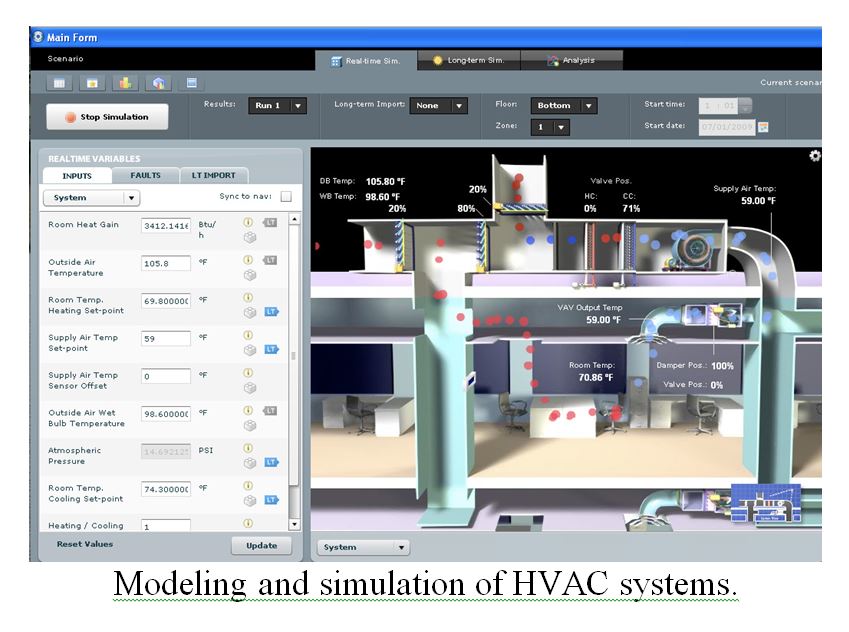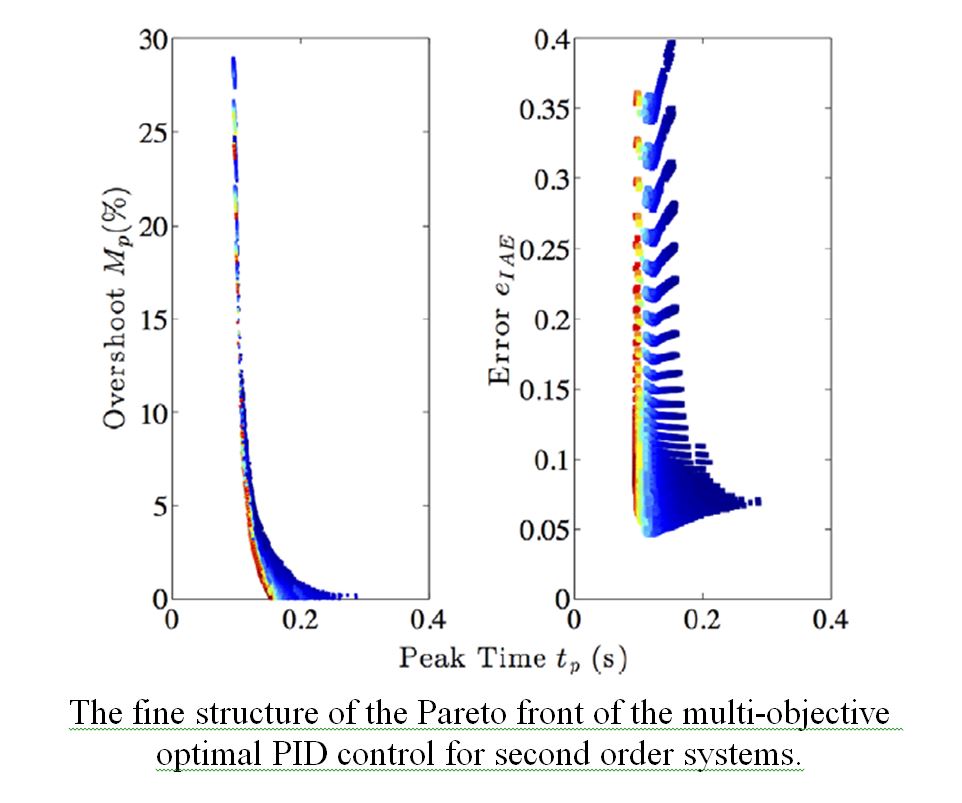HVAC Systems in Office Buildings
Fault Detection in HVAC Systems
Buildings represent one of the fastest growing energy consuming facilities on the earth and use 72% of nation’s electricity, and 38.9% of nation’s total energy consumption. Currently, the heating, ventilating, and air conditioning (HVAC) systems account for 57% of the energy used in U.S. commercial and residential buildings. Unfortunately, HVAC may fail to meet the performance expectations due to various faults, thus wasting more than 20% of the energy it consumes.
The building HVAC system has a multi-level structure. We have developed cross-level top-down fault detection and diagnosis schemes to ensure the normal operations of HVAC in order to save energy. We can quickly identify at which level the fault exists, and further narrow down the roots of faults at the component level.
Modeling and Control of HVAC Systems
The performance and energy saving of building heating, ventilation, and air conditioning (HVAC) systems can be significantly improved by the implementation of intelligent and optimal controls. We have developed a parametric modeling approach and a system-level control design to improve the energy efficiency of building HVAC systems. In particular, we have developed an auto-regressive moving average exogenous (ARMAX) model that relates the return air temperature and flow rate of an air-handling-unit (AHU) for multi-zone variable air volumes (VAVs), and a model predictive control (MPC) to minimize the energy consumption of the AHU. The control tracks the set points subject to thermal load constraints from lower level VAVs. The optimal control can achieve over 27.8% energy saving on average as compared to the baseline control that is originally installed in the building, and can closely track the supply air flow rate and setpoint of room temperature.\
Multi-Objective Optimization of Dynamical and Control Systems
Multi-Objective Optimal Control Design
Controls are designed to meet often conflicting objectives. We are developing various algorithms for multi-objective optimal design of linear and nonlinear feedback controls of dynamical systems with or without time delay. In particular, we are working on the following methods for discovering the fine global structure of the Pareto set and Pareto front:
- Evolutionary algorithms
- Cell mapping methods
- Parallel computing algorithm
- Hybrid methods
We have numerically designed and experimentally validated a wide range of multi-objective optimal controls including:
- Fractional order active damping
- Classic PID controls
- Time-delayed controls
- Sliding mode control
- Linear quadratic regulators
Multi-Objective Optimization of Engineering Structures
Engineering structures are designed to meet multiple objectives. Examples include aerospace structures that must have a lightweight, superior acoustic isolation and sufficiently high strength. These objectives can be conflicting. We study special ways to design and optimize engineering structures to meet multi-objectives. The structures of interest to us include
- Lightweight structure with superior acoustic transmission property
- Structures with optimal bulking strength and minimum weight
- Mechanical component designs for best manufacturability and low cost
This research is being led by the Applied Controls Laboratory (PI: Dr. Jian-Qiao Sun)



